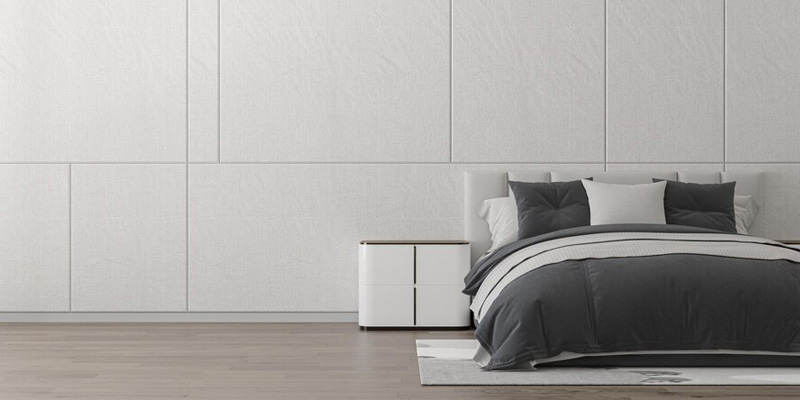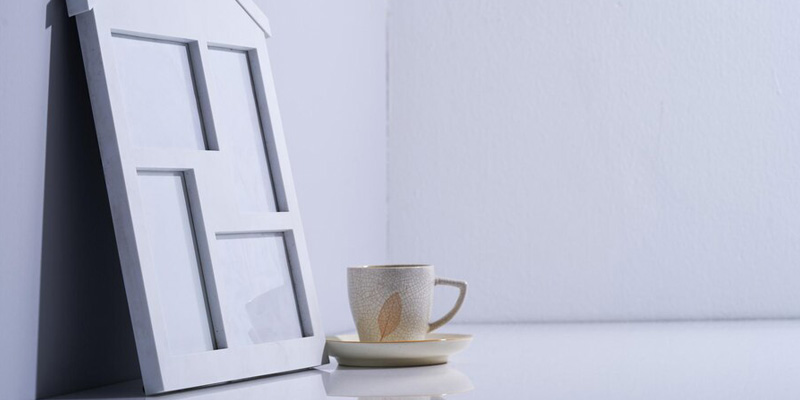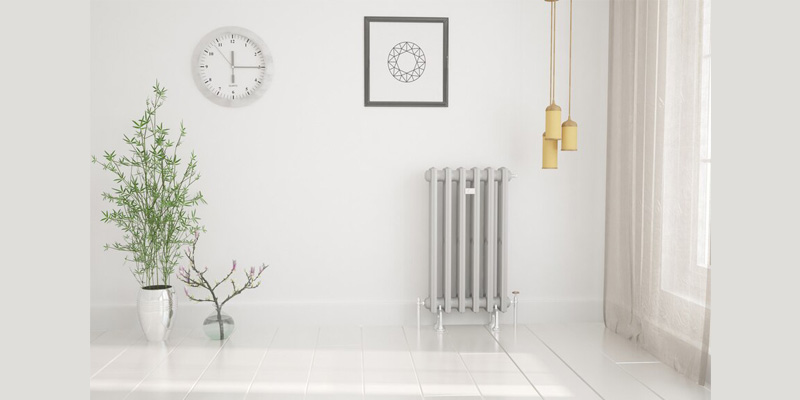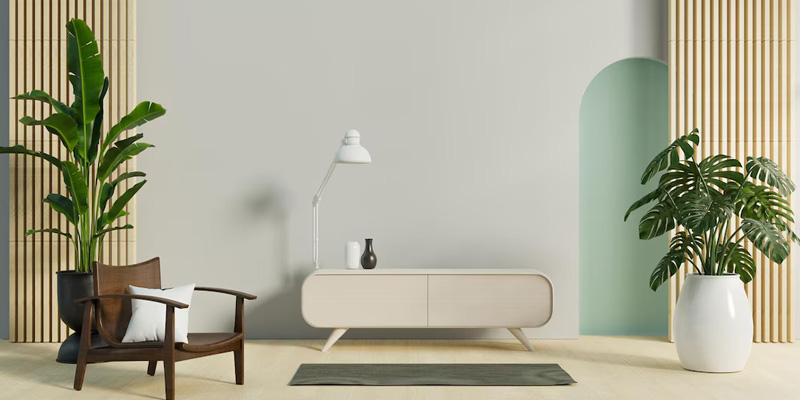The minimalist approach stands beyond decorative uses as it represents an active life decision which supports basic elements and meaningful living. Through minimalism in interior design one adopts the practice of removing clutter while relying on fundamental elements to achieve peaceful environments which harmonize the setting. A minimalist approach enables you to fashion a modern well-designed peaceful space out of your living area. The blog investigates minimalism principles as well as their implementation steps and introduces the advantages behind minimalistic living.
Understanding Minimalism in Interior Design
Most people link minimalism to horizontal design elements alongside monochromatic tones merged with extensive area openness. The principal directive targets reduction of all nonessential elements. Simplicity functions as a balance-finding mechanism in minimalism since this design style diverges from maximalist wealth and excitable aspects.
Minimalist interiors are defined by:
A minimalist room presents neutral color schemes with white and gray tones and earth-based shades which create peaceful ambiances.
Functional yet purposeful furniture makes each piece essential thus removing all non-essential things.
Visual clarity emerges when surfaces remain uncluttered to help people organize their mental state.
Minimalistic Art: Integrating minimalistic art enhances the beauty of a stylish living space by adding subtle sophistication.
How to Create a Minimalist Living Space
1. Declutter and Organize
Decluttering stands as the initial requirement for starting minimalism practice. Study all your belongings to eliminate all objects which lack function or meaning. A systematic approach is necessary to handle the process because starting with one room or category at a time produces better results.
Tips to declutter effectively:
Keep all items that bring true joy according to the KonMari methodology.
You should follow the annual timeframe as your benchmark because items that sit unused for twelve months likely need to be discarded.
Physical clutter reduction can be achieved through paper and sentimental photograph digital conversion.
2. Select Neutral Colored Paintings that Fit Together Well
Neutral colors help to develop big open spaces which feel calm and relaxing. Many people decorate with white, beige, gray, and pastel tones as their favorite neutral choices. These colors allow sunlight to enter and spread throughout the area to create an open and welcoming space.
As good style alternatives, choose wood, stone, and linen materials for your space. Minimalistic Art in these tones can elevate the ambiance of stylish living spaces.
3. Choose furniture with useful features and top-quality construction
Minimalist furniture needs to appear lovely while meeting all everyday needs. Pick furniture that follows simple shapes with basic forms that exist to perform specific tasks.
Key furniture considerations:
Multi-functional furniture, such as a sofa bed or an extendable dining table.
Storage systems come with the space to create more room.
The furniture needs quality materials that survive well through time.
Minimalistic Art: A carefully chosen piece of minimalistic art can define stylish living spaces with a touch of elegance.

4. Install smart storage implants to use available space more effectively
A tidy room needs effective storage tools to help organize items. Built-in shelves and hidden cabinets along with modular furniture store things neatly behind closed spaces.
Minimalist homes need better storage methods to work:
Place shelves at different heights across the wall for storage.
You should pick furniture items that come with hidden storage space built in.
Place small item holders and baskets to maintain neatness.
Consider placing minimalist artwork with the law of coastal appearance across your work zones.
5. Let Natural Light Shine In
In minimalist architecture, natural light serves as one of the key components. The space gains appeal and appears larger through this addition. Select blinds and drapes that are transparent or filter soft light instead of dense window coverings.
To maximize light:
Place mirrors to direct available daylight into rooms and make spaces appear broader.
Attractive rooms gain brightness through white look interior items.
Display Minimalistic Art designs where their lines and textures enhance sunlight brightness in deluxe home interiors.
6. Add Thoughtful Decor and Greenery
The concept of minimalism does not include complete elimination of decorating elements. Select only a couple of high-quality decorations that deliver true meaning.
Ideas for minimalist decor:
A statement art piece instead of multiple small decorations.
Simple vases with fresh flowers or dried botanicals.
Succulents along with snake plants and peace lilies make suitable houseplants for bringing natural beauty to your spaces.
Our goal here is to explore minimalistic art, which serves as an exceptional way to introduce character to spaces that aspire to stylish design.

7. Embrace Negative Space
Every minimalist design approach depends on negative space, which designers refer to as “white space.” The use of open space helps both the eyes to relax while producing feelings of balance and tranquility. Each room must have free space because crowded arrangements obstruct the ability to enjoy open areas that promote uncluttered surroundings.
Benefits of a Minimalist Living Space
1. Reduced Stress and Anxiety
A home without clutter produces a mental state that also remains uncluttered. A minimalist space permits both mental relaxation and lower mental pressure which promotes higher calmness in your life.
2. Increased Productivity
Minimalist space design supports greater efficiency by providing less distraction space. A minimalist setup brings its greatest advantages when used in domestic workplaces and educational workspaces.
3. Easy Maintenance and Cleaning
The number of objects in the home determines both dust levels and cleaning demands and space maintenance simplicity. When you reduce the number of belongings in your home, it becomes much simpler to maintain daily tasks.
4. Financial Savings
The purchase of high-quality durable items lets you spend less money since these items survive longer and decrease the frequency of product changes. The money saved on excess decorations also reduces the amount you spend on spontaneous purchases.
5. Enhanced Aesthetic Appeal
Simplicity in interior design presents contemporary elegance that stands permanent in its appeal to viewers. Minimalistic Art adds personality to stylish living spaces without overwhelming them.

Minimalism Beyond Interiors: A Lifestyle Choice
Internal design stands as only one part of the minimalist philosophy, which works to teach people about responsible purchasing alongside environmentally friendly ways to live.
Different strategies that help you adopt minimalist living include:
You should only purchase essential items and resist the urge to make careless buying decisions.
You should conduct digital decluttering by removing all unneeded digital files along with additional emails from your system.
Minimalistic Art enhances the simplicity of stylish living spaces while maintaining a refined and curated aesthetic.
Conclusion
In minimalistic practice, one establishes well-designed functional home environments through minimalist methods. You can obtain both an attractive and peaceful living arrangement through the implementation of simplicity along with decluttering and purposeful design elements. Minimalist living design creates more appealing rooms that benefit your emotional and physical state positively. Whether you’re renovating your home or looking for expert advice, leading property consultants in Bangalore can help you achieve the perfect minimalist living space tailored to your needs.
Embrace your minimalist adventure now by making your home tidy yet stylish along with including Minimalistic Art in Stylish Living Spaces to find peace.







Add comment